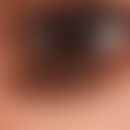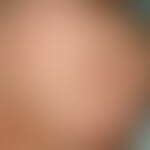Synonym(s)
DefinitionThis section has been translated automatically.
Frequent dermatological problem, which is particularly prevalent in autumn and winter and is characterized by a mostly dry, less often oily dandruff ( pityriasis simplex). Dandruff can be considered a minus variant of a:
occur. If a problem only occurs on the scalp, an etiologic assignment to a disease is often not possible.
The clinical picture of Tinea amiantacea, which can be regarded as the maximum variant of pityriasis simplex capillitii, requires special etiological consideration.
Furthermore, the head ache of the mammal(gneiss) is to be particularly evaluated.
Likewise, the aetiology of "dry dandruff" in adolescents and adults must be given special consideration with regard to its treatment.
Occurrence/EpidemiologyThis section has been translated automatically.
30% of women and about 20% of men suffer at least temporarily from dandruff without any recognisable underlying disease.
You might also be interested in
EtiopathogenesisThis section has been translated automatically.
Notice! Dry dandruff is often caused by "overtreatment" of the scalp! Remarkable is the evidence of a significantly increased histamine concentration in the dandruff.
ClinicThis section has been translated automatically.
Differential diagnosisThis section has been translated automatically.
TherapyThis section has been translated automatically.
Pityriasis simplex capillitii (PSC) is a constitutional problem. It requires permanent treatment! Compliance indispensable! From the therapeutic approach, pityriasis simplex capillitii with seborrhoea and pityriasis simplex capillitii without seborrhoea must be separated.
- Pityriasis simplex capillitii with seborrhoea: Treatment with a mild ichthyol-containing preparation is usually sufficient.
- Shampoos containingpyrithione zinc, selenium disulphide or salicylic acid can be tried alternatively. These inhibit to different degrees the formation of dandruff, the microbial colonization of the scalp and seborrhea. In addition, it is recommended to rub the scalp with an o/w emulsion 1-2 times a week: gently massage it into the scalp in the evening and wash it off the next morning with a mild scalp wash.
- Pityriasis simplex capillitii with seborrhoea and itching: External therapy as above. In addition, experiment with a menthol-containing or polidocanol-containing formulation (Rp: menthol-containing head tincture; Rp: polidocanol-containing head tincture). Additionally, apply a low-potency glucocorticoid alcoholic solution once a week (e.g. Lygal head tincture, Alpicort-N, Rp: triamcinolone acetonide head tincture 0.05% ).
- Pityriasis simplex capillitii without seborrhoea (with and without itching): Frequently exaggerated hygiene of the scalp, especially men wash the hairy head frequently daily, usually using unnecessarily large amounts of a liquid shampoo. This results in a latent, toxic-irritative irritation of the scalp with an increased exfoliation of dandruff (washing the head stops dandruff and pruritus by the hour) Circulus vitiosus!
- Breaking the vicious circle by changing the automatic care system! This is often an amazingly difficult problem. First, avoid liquid shampoos completely. Clean the scalp once a week with soap (e.g. Nivea baby soap).
- Regular care with an O/W lotion (e.g. Abitima Lotion, Excipial U Lipolotio). Apply lotion to the already moistened capillitium in the shower, distribute and rinse briefly. Normal styling without residual grease on the hair is possible.
- Alternatively, you can try a nightly oil treatment (head cap) by applying a few drops of a vegetable oil (e.g. almond oil) to the scalp and massaging it in lightly with the fingertips. The oil can be washed off the next day with a mild shampoo and repeated several times a week.
- In case of severe itching, apply an additional low-potency glucocorticoid alcoholic solution once a week, such as 0.2% prednisolone tincture, possibly in combination with salicylic acid (e.g. Lygal Head Tincture, Alpicort-N).
It is important to exclude the possibility of Malasessia-furfur colonisation (wood light). If positive, daily treatment (over 1 week) with a 1-2% Clotrimazol solution. Alternatively use a ketoconazole containing solution (e.g. Terzolin) for 1 week.
TablesThis section has been translated automatically.
Topical exteriors in pityriasis simplex capillitii with seborrhoea
|
Generic drug |
Example preparations |
For dry scalp |
Free of active ingredients |
Physiogel Boots, pH5 Eucerin |
Tar derivatives |
No longer available in the trade; on a magistral formulation with 0.5 - 3.0% CSF carbonis detergens is possible. |
|
Selenium sulphide |
Ellsurex |
|
Sulphur |
Diasporal |
|
Other |
Ducray sail shampoo, Normaker shampoo |
|
In case of heavy scaling |
Salicylic acid |
squamasol gel |
Zinc pyrithione |
De-squaman Hermal |
|
Miscellaneous |
Ducray Kertyol or Selegel shampoo; Crinohermal anti-dandruff shampoo intensive; Pityker; Stieprox intensive shampoo |
Note(s)This section has been translated automatically.
LiteratureThis section has been translated automatically.
- Kerr K et al (2011) Scalp stratum corneum histamine levels: novel sampling method reveals association with itch resolution in dandruff/seborrhoeic dermatitis treatment. Arch Derm Venereol 91: 404-408
- Mayser P et al (2003) The hair strand test - a new method for testing antifungal effects ofantidandruff
preparations.J Cosmet Sci 54:263-270. - Wohlrab J et al (2017) Local therapy of the scalp. dermatologist 68: 478-482
Incoming links (11)
Dandruff; Dandruff; Dandruff; Hair cylinder; Hair shampoo; Malassezia; Pityriasis capitis; Pityriasis simplex; Pyrithione zinc; Sebostasis; ... Show allOutgoing links (23)
Almond oil; Atopic dermatitis (overview); Clotrimazole solution hydrophile 1% (nrf 11.40.); Glucocorticosteroids; Gneiss; Hair shampoo; Head tincture containing menthol; Head tincture containing polidocanol; Malassezia; Menthol; ... Show allDisclaimer
Please ask your physician for a reliable diagnosis. This website is only meant as a reference.





